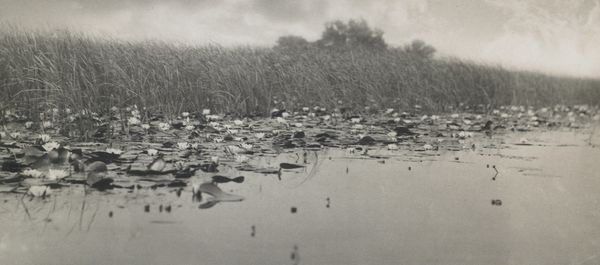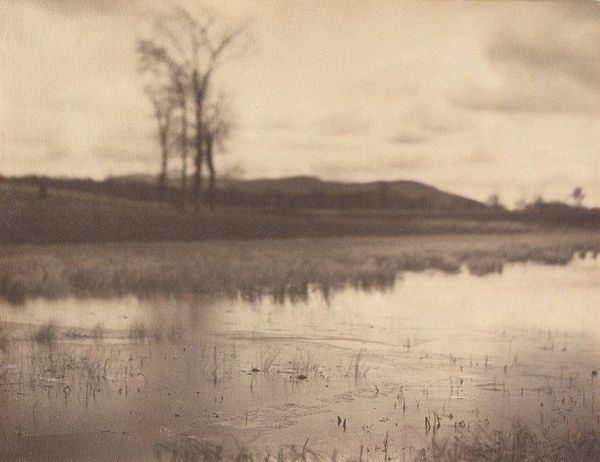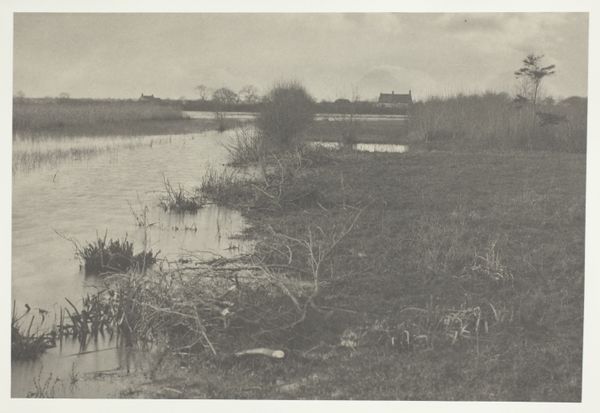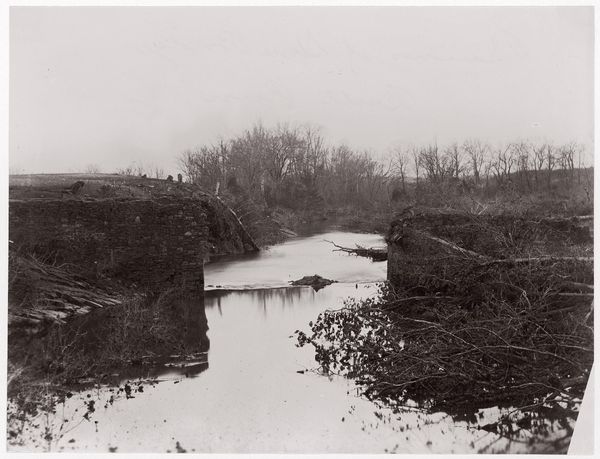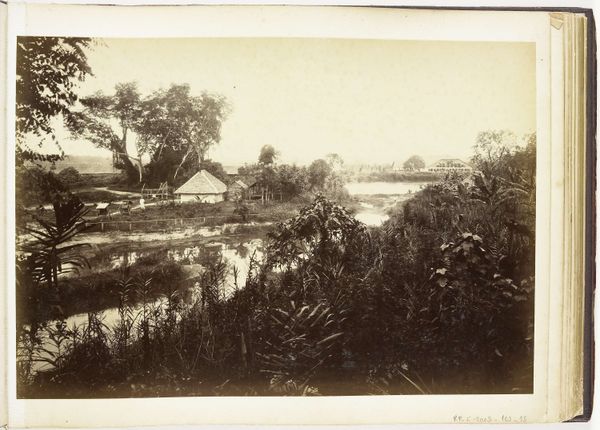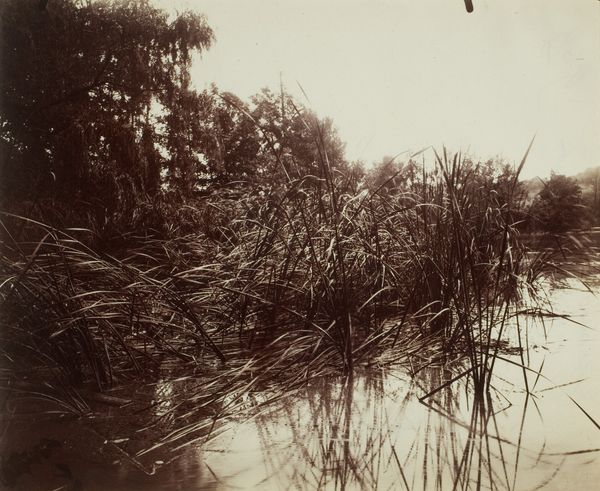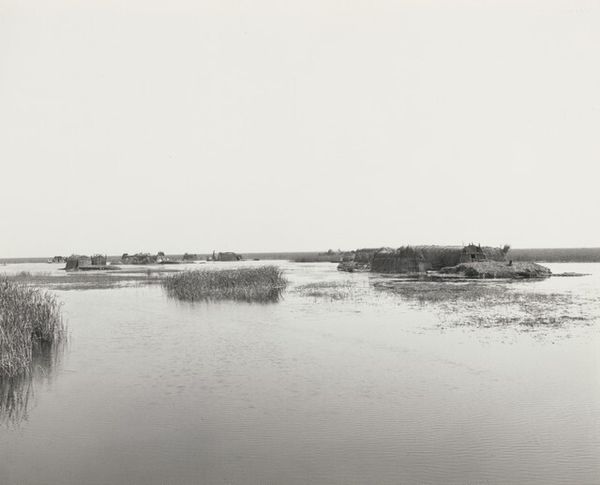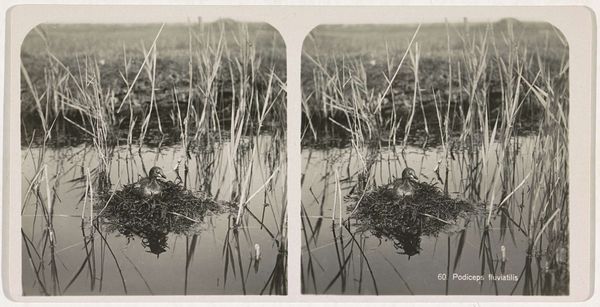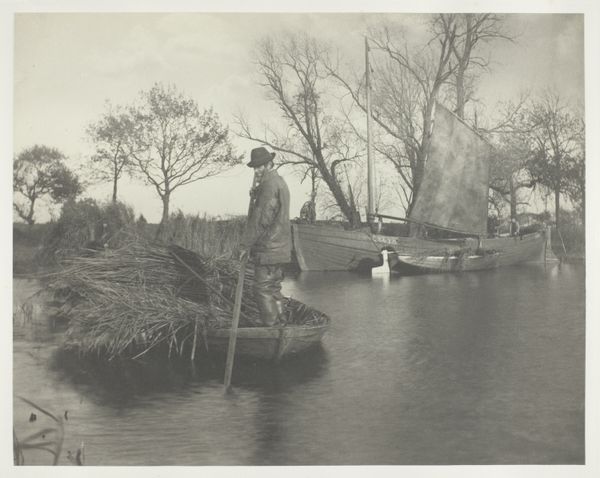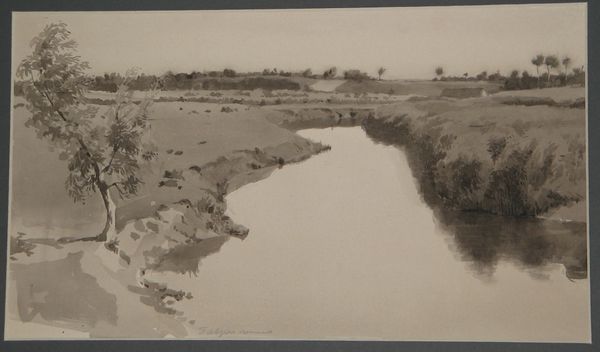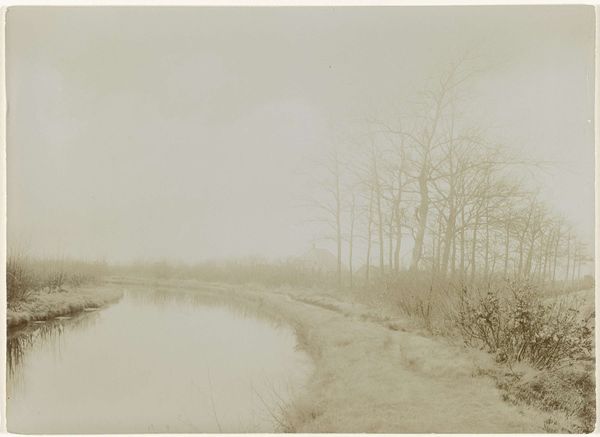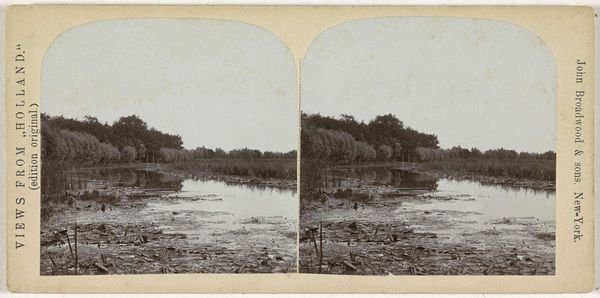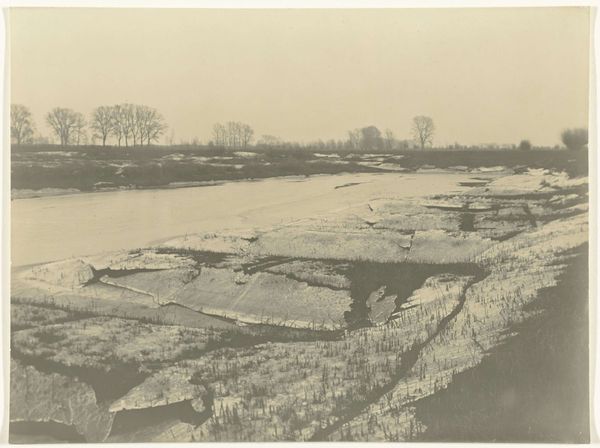
photography, gelatin-silver-print
#
impressionism
#
nature photography
#
landscape
#
nature
#
photography
#
gelatin-silver-print
#
monochrome photography
#
naturalism
Dimensions: Image: 12.3 x 28 cm (4 13/16 x 11 in.) Mount: 28.7 x 41 cm (11 5/16 x 16 1/8 in.) Sheet (Interleaving Plate Sheet): 28 x 40.8 cm (11 x 16 1/16 in.)
Copyright: Public Domain
Curator: This gelatin-silver print, titled "Water-Lilies," was created by Peter Henry Emerson in 1886, and it now resides here at the Metropolitan Museum of Art. Editor: It’s a strikingly subdued image. The muted tones evoke a profound sense of tranquility; it almost feels as though the entire scene is holding its breath. The composition is really quite masterful with the line of reeds creating this striking contrast to the flatness of the water. Curator: Emerson's focus on naturalistic photography often aimed to capture authentic rural life. These water lilies become symbolic of the undisturbed beauty of nature, reflecting a connection to the cycles of life and death that have persisted through the ages. Notice how the lily pads, scattered across the water, suggest continuity and the passage of time. Editor: Absolutely. The reflections of light in the water add another layer, creating almost an abstract element that belies the photo’s documentary roots. I see a distinct play with form. The linearity of the reeds against the amorphous spread of lilies—it all constructs this very deliberate visual experience. Curator: And it is important to consider the symbolism that water lilies carried during this era, particularly the association with purity and the ephemeral nature of beauty. This is reflected by its prevalent use during the Pre-Raphaelite era, whose sentiment matches Emerson’s pursuit for authentic representation. The photographic process itself, this gelatin-silver print technique, contributed to the image’s subtle tonal range, amplifying that impression of serenity. Editor: True, the materiality here is quite critical. The subtle grays allow the compositional elements to come to the fore, don't they? The image almost collapses its own depth creating a flatness that anticipates much later artistic styles. Curator: In essence, the work operates as a potent symbol, encouraging us to reconsider our bond with the environment, as well as our own capacity for preserving natural beauty across generations. Editor: And, on the aesthetic front, the image’s delicate formalism really stays with you, encouraging contemplation on nature and photographic representation in ways both subtle and profound.
Comments
No comments
Be the first to comment and join the conversation on the ultimate creative platform.
